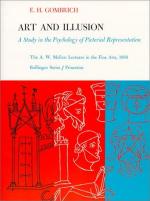|
This section contains 1,438 words (approx. 4 pages at 400 words per page) |

|
Henningfeld is a professor of English at Adrian College and has written widely on contemporary literature for reference and educational publishers. In this essay, Henningfeld compares the role of the beholder in the theories of E. H. Gombrich with the role of the reader in the theories of reader response literary critics.
Throughout his book Art and Illusion: A Study in the Psychology of Pictorial Representation, writer E. H. Gombrich compares painting to language. The comparison offers him a useful metaphor: he is able to speak of an artist's vocabulary, the grammar of art, and the syntax of painting. Gombrich's primary argument is that an artist builds his or her representation of reality through the use of schemata, or formulas, which function in much the same way that vocabulary functions in the verbal representation of reality. Furthermore, he suggests that only certain combinations of schemata are available...
|
This section contains 1,438 words (approx. 4 pages at 400 words per page) |

|




